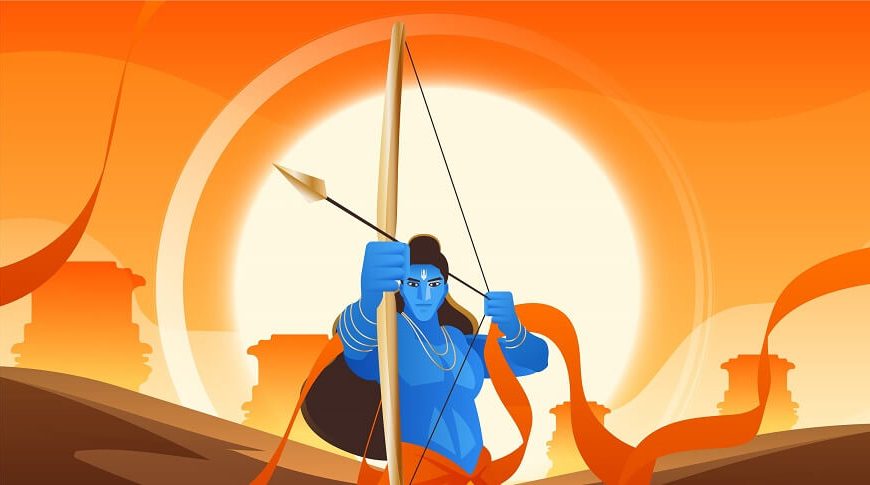Diving into the Ramayana isn’t just about flipping through an ancient text; it’s about discovering a story that has been the cornerstone of moral teachings for ages. When one wonders, “What is Ramayana?” it’s like opening a gateway to a world where every action and every character is a lesson in ethics and integrity. The moral of Ramayana isn’t just a lesson tucked away in its pages; it’s a living, breathing philosophy that resonates with the choices we make in our lives. For anyone hungry for information about Ramayana, prepare to embark on an epic quest that offers not just tales of deities and demons but a timeless guide to living rightly.
What is Ramayana?
The Ramayana is not just any tale; it’s an intricate epic poem composed in ancient Sanskrit by the sage Valmiki. Nestled within the sacred texts of Hindu Smriti, the Ramayana offers more than just a story—it’s a journey through life’s ideals, set against the backdrop of its characters’ incredible exploits. In its verses, we trace the footsteps of Lord Rama, revered as the seventh incarnation of Vishnu. His life story, echoing through the ages, teaches us the enduring importance of living with honesty, remaining faithful, and acting with honour. It’s a spiritual guidebook, a historical narrative, and a revered scripture that together offer a comprehensive look at the ideals of dharma. Rama’s journey from a revered prince to a wise king is a representation of personal growth and spiritual enlightenment, making the Ramayana a cornerstone of moral and ethical teachings.
History of Ramayan
The roots of the Ramayana reach deep into the rich soil of the Vedic period, marking it as a narrative that has stood the test of time. Written in what ancient Indian traditions call the Treta Yuga, this epic has left its mark on many generations, shaping culture and spirituality with its timeless tales. It intricately weaves historical characters with allegorical themes, thus etching itself into the cultural consciousness of India and beyond. Each character, from Rama to Sita, from the loyal Lakshmana to the valiant Hanuman, embodies qualities that are revered in Hindu culture. The historical impact of the Ramayana is evident in the numerous temples, literature, art, and folklore inspired by its profound narrative.
Information About Ramayana
The Ramayana is divided into seven books, detailing Rama’s birth, his youthful adventures, his banishment from the kingdom by his stepmother, the abduction of his wife Sita, the search for her, the war with Ravana, and ultimately, Rama’s righteous return to Ayodhya to assume the throne.
Now, let’s embark on a simplified journey through the Ramayana, tailored for children and intertwined with morals that resonate even today.
The Moral of Ramayana
The Ramayana teaches many lessons. Among them, it shows the importance of following one’s duty, the power of good over evil, and the value of devotion and loyalty.
Ramayana Story for Kids
In the lush greenery of Ayodhya, King Dasharatha ruled with wisdom and kindness, fathering four noble sons. Rama, the eldest, was the embodiment of valour and gentleness. His marriage to the virtuous Sita was celebrated across the realms. However, destiny had other plans, and due to courtly schemes, Rama was unjustly banished to the wilderness. Accompanied by Sita and the faithful Lakshmana, they embraced forest life. It was there that Sita caught the eye of the ten-headed demon Ravana, who cunningly abducted her, setting the stage for an epic confrontation. Rama, with the aid of Hanuman and his vanara army, embarked on a daring mission to rescue his beloved wife. The ensuing conflict between Rama and Ravana culminated in a dramatic battle, symbolising the eternal fight between good and evil. With Ravana’s fall, Rama’s exile ended, and they returned to Ayodhya, where he was crowned king, ushering in an age of peace and righteousness known as Ram Rajya.
That, in a nutshell, is the Ramayana story for kids:)
Moral Lessons for Children
- Duty and Respect:
- Courage and Hope:
- Loyalty and Devotion:
- Good Triumphs Over Evil:
- The Significance of Ramayana in Modern Times
Rama’s obedience to his father’s word and his respect for his elders is a lesson in duty and respect for children.
Even in the darkest of times, Rama never lost hope and faced challenges with courage.
Sita’s unwavering loyalty to Rama and Hanuman’s devotion are examples of the strength of loyalty and love.
The defeat of Ravana signifies that no matter how strong evil may seem, good always prevails.
As children grow, these stories and their morals shape their understanding of virtue and righteousness. In a world full of complexities, the Ramayana’s simple yet profound morals serve as a compass for young minds to develop integrity and character.
In modern times, the Ramayana is more than a historical account; it serves as a beacon for young minds grappling with moral dilemmas. It is in the actions of Rama, the compassion of Sita, and the loyalty of Hanuman that children find examples of character. In today’s world, where righteousness often stands at crossroads, the Ramayana shines as a testament to the power of virtue and the importance of following one’s moral compass. By instilling these ancient values, we can guide our young ones to lead lives of purpose and integrity, ensuring the Ramayana remains a living legacy in the hearts of future generations.
EuroKids, a leading name in early childhood education, understands the impact such timeless tales can have on the holistic development of children. By integrating the moral values of epics like the Ramayana into their curriculum, EuroKids offers a nurturing environment where learning is not just about facts, but also about cultivating good values. As EuroKids continues to foster young minds across the nation, it carries the torch of tradition and morality, illuminating the path for the next generation.
And so, the history of ramayan teaches us that it is not just a story of heroes and demons but a guide that lights the way for the young, instilling in them the timeless virtues of honour, bravery, and compassion. The story of Rama and Sita, with its rich tapestry of adventure, love, and war, continues to be the bedrock of moral lessons for children across the world.
EuroKids invites parents and children alike to become a part of a learning adventure that goes beyond books and classrooms, one that nurtures the heart and soul of every child with stories like the Ramayana. Join us, and let’s give our children the roots of tradition and the wings of understanding to soar high in the sky of morality and virtue.
As the echoes of Rama’s victory horn fade into the annals of mythology, we are reminded that the Ramayana is not just an epic; it’s a compass for young hearts navigating the voyage of life. Let’s encourage our children to learn and live the moral of the Ramayana, crafting a future as bright as the story itself.
Story Type
The Ramayana is an ancient Indian epic poem that combines historical narrative, mythological themes, and moral teachings. It is a blend of adventure, romance, and spirituality, deeply ingrained in the cultural fabric of India and revered in several other cultures worldwide.
Story Summary
The Ramayana narrates the life of Rama, a prince of Ayodhya, his banishment from the kingdom, the abduction of his wife Sita by Ravana, and the epic battle to rescue her. The story concludes with Rama’s return and coronation as king. It’s a saga of duty, loyalty, bravery, and the triumph of good over evil.
Story Characters
Rama: The protagonist, symbolizing righteousness and virtue. Sita: Rama’s wife, epitomizing devotion and purity. Lakshmana: Rama’s loyal brother, representing dedication and sacrifice. Hanuman: A devout follower of Rama, embodying strength, devotion, and bravery. Ravana: The antagonist, the ten-headed king of Lanka, symbolizing ego and evil.
Related Stories
The Mahabharata:
Another epic narrative of ancient India, offering deep insights into duty, righteousness, and the complexities of human nature.
Bhagavad Gita:
A 700-verse Hindu scripture that is part of the Mahabharata, offering spiritual guidance and philosophical teachings.
FAQs
Q: Who wrote the Ramayana? A: The Ramayana was written by the sage Valmiki in ancient Sanskrit.
Q: How many books are in the Ramayana? A: The Ramayana consists of seven books.
Q: Who are the main characters in the Ramayana? A: The main characters include Lord Rama, Sita, Lakshmana, Hanuman, and Ravana.
Q: What are the key teachings of the Ramayana? A: The Ramayana teaches the importance of duty, the triumph of good over evil, devotion, loyalty, and the value of righteousness.















